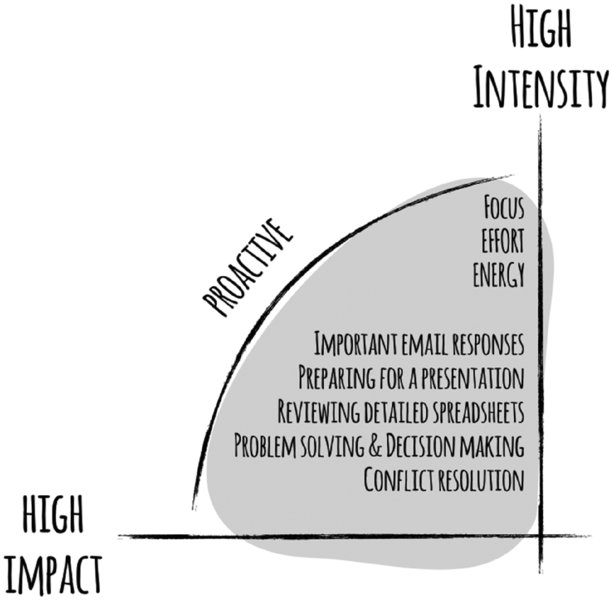Chapter 4First 2 hoursProactive
Too often I hear people complain that they spend their whole day in pointless back-to-back meetings, or running from one crisis to another and never getting what they consider to be their ‘real’ or important work done.
Scheduling high-intensity and high-impact work for the first two hours is the first step to truly managing your time.
Not only are the first two hours likely to be our optimal time for getting stuff done, it’s also the time where we can set ourselves up for success. The first two hours are good for the tasks listed in figure 4.1 (overleaf).

Figure 4.1: your first 2 hours
Getting the right things done first means the rest of the day will almost sort itself out.
Choose wisely
It’s the time of the day when we can be proactive by choosing what we need to do and taking control. It’s the time for you to work on the things that will give you the greatest return on your energy-input investment.
The first two hours is when we have the greatest levels of alertness and mental capacity, so we need to make the most of it on the most difficult jobs or the things that require great attention.
Protect this time vigorously! Block it in your diary so you have greater control as to how it is used.
There are three things (shown in figure 4.2, overleaf) we leverage when planning our work for the first two hours:
- Focus. Our concentration is ...
Get The First 2 Hours now with the O’Reilly learning platform.
O’Reilly members experience books, live events, courses curated by job role, and more from O’Reilly and nearly 200 top publishers.

